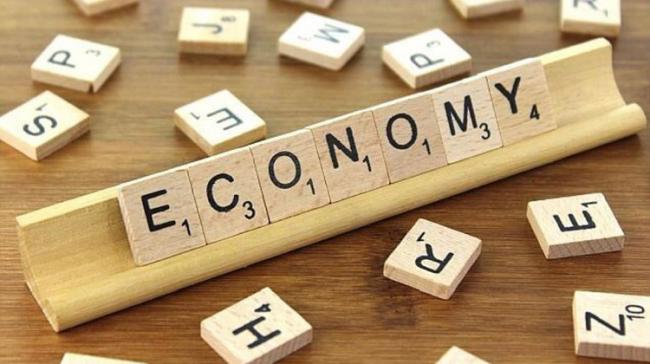Indian Economy Poised To Take An Upward Trajectory

New Delhi: The factors responsible for a five-quarter slump in the growth rate, including the adverse effects of demonetisation and GST implementation, have played out and the Indian economy is now poised to take an upward trajectory in the coming quarters, says the government's Chief Statistician.
He also feels that concerns over slow agricultural growth and inflation were "over-blown" and that the current fiscal would "certainly end with inflation below four per cent". Although refusing to forecast the GDP growth rate for the complete fiscal, Chief Statistician T.C.A. Anant says the likely direction was going to be upward.
"If one considers the factors which led to a decline in GDP till the fourth quarter of the last fiscal and the first quarter this fiscal, it would be possible to argue that those factors have worked their way out and we should, therefore, see an improvement in growth," Anant told IANS in an interview.
The first factor, Anant said, had to do with global commodity prices. These had crashed in 2014-15, resulting in lower input costs that boosted growth rates in 2014-15 and 2015-16. But once the commodity prices recovered they pulled down growth rates, as reflected in the slowdown in the last five quarters.
"Now, the general reading of market experts is that they are likely to stay at this level. If that expectation is maintained, then on this ground, I don't expect to see any further changes or influence (on GDP calculation) from this source," he said.
Last week, the CSO released the nation's GDP for the quarter ending September, which showed a break in the slump of the five quarters, a rise in the manufacturing sector's output and the economy poised to take an upward path in the coming quarters.
Anant added that there were also several domestic factors at play, including the crisis in the real-estate sector which saw very rapid growth in the high-growth period, and somewhat linked to it, the non-performing assets (NPA) situation.
"The government sought to address this problem through creating a new governance regime for the real estate sector. This regime is now in place and its adoption is under process. In so far as the real estate sector is concerned, the expectation is that as and when the adoption process becomes more complete, we will expect to see a revival in the sector," he explained.
Regarding the NPA crisis, "which is causing a certain degree of drag in so far as private investment is concerned", Anant said the process of creation of NPAs, or assets which turned bad, was now over to a certain extent and the economy was in the phase of trying to resolve the issue.
"In addition, during 2016-17, there were short-run effects caused by currency replacement where old notes were de-notified and a replacement process was put in place which led to a temporary shortage of cash. That cash replacement was pretty much complete before the end of the fourth quarter of last year."
"The fourth major structural change which influenced the decline in growth rate up to the first quarter was the fact that the government decided to introduce the GST. This also created a natural disruption, particularly in manufacturing companies which were faced with the difficulty of the treatment of goods produced prior to GST and were, in their judgment, supposed to be sold after GST came in," Anant elaborated.
He said this uncertainty led manufacturing companies to first pull down production and then get rid of inventories, all of which came to an end on July 1. "If you look at all of these events as causation to the declining story which we see in place from the last five quarters, given the sort of responses which have been put in place to them, the belief is that you should now see an upward trajectory."
"All of these have, so to speak, played out. Or at least the negative elements of these have played out. Their positive elements are still being played out. So if you put all of that together, the likely direction is going to be upward... The growth should improve. But how much is very hard to quantify," Anant said.
Though the Reserve Bank of India (RBI) adopted a neutral stance on the policy rates earlier this week citing pressure on prices as one of the main reasons, Anant dismissed the concern over inflation.
"We are at a much lower level of inflation than we have ever been any time in the past... In fact, my judgment personally would be that we are going to end the financial year certainly below four per cent.
"The reason why I expect inflation to fall is because one of the factors which has led to prices rising in the last couple of months is food and we are now in the seasonal part where food prices tend to traditionally soften. So chances are that you would probably see the overall effect, even if it rises a bit, would not exceed four per cent. That's my judgment," Anant said.
On the slowdown in agricultural growth, the Chief Statistician said while there was a concern, it was over-blown. While there still is considerable dependence on the monsoon, agriculture had become a lot more robust, he said. "In fact, if you look at our data, our output figures show much less volatility than moisture data, or monsoon data.
"This year's production relative to last year is slightly lower. But if you look at it in a long-term perspective, this year's production is substantially better than not just the previous two years -- which you can say were drought years -- but (also in terms of a) long time series, it is better than the best which was achieved any time in the past, even four or five years ago, when you had very good monsoon," Anant said. (IANS)




